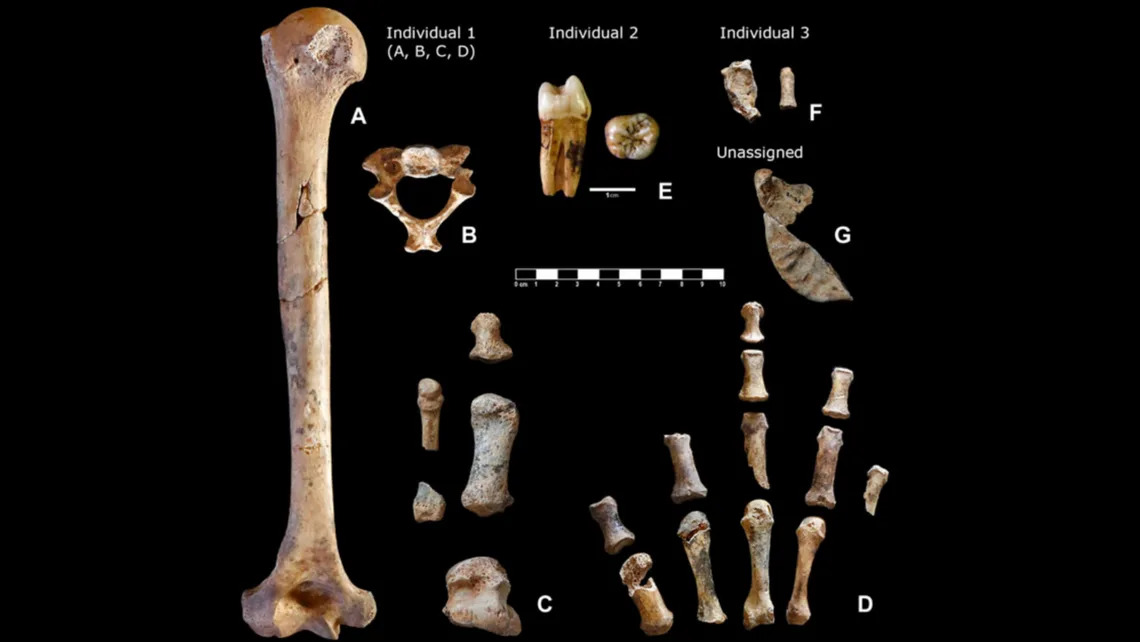Brendan Rascius
Wed, September 27, 2023

Photo from Frontiers in Earth Science
A trove of Neanderthal bones was recently found inside a box donated to a museum in Spain, researchers said.
The ancient remains, concealed under a layer of clay-like material, sat untouched for decades, according to a study published Sept. 19 in the journal Frontiers in Earth Science.
Amateur collector Miguel Aznar excavated the bones near Barcelona in the 1970s. And in 1986, he donated an “exceptional collection” of more than 100 bone pieces, as well as pottery fragments and animal remains, to the Museum of Archaeology of Catalonia.
Museum officials finally set about identifying the mysterious donation in 2020, researchers said.
Brushes and water were used to clean the remains, and acrylic resin was applied to help repair fractures. Despite having been coated in sediment, the bones appeared remarkably well-preserved.
After analyzing the collection, researchers concluded there were 53 Neanderthal bones inside. A molar, jaw fragment and bones from arms and feet were among those found.
“At least three individuals can be identified in the sample,” researchers said in the study. “The most complete one is defined by a complete left humerus (the largest bone in the upper arm).”
The three identified individuals appear to have been a woman, a child about 11 years old and another child about 7 years old.
The three Neanderthals roamed the Iberian Peninsula at least 42,000 years ago, researchers said.
“This assemblage is currently the most extensive Neanderthal collection from the northeastern Mediterranean Iberia, offering invaluable insights into the morphology and evolutionary trajectory of Late Pleistocene hominins,” researchers said.
Neanderthals were a subspecies of ancient humans who lived in Eurasia up until about 40,000 years ago, according to the Natural History Museum. They stood no more than 5.6 feet tall and ate plants, meat and shellfish.
Though Neanderthals went extinct long ago, their DNA lives on in modern humans, according to the museum. Some people share about 2% of their genetic makeup with Neanderthals.
No comments:
Post a Comment